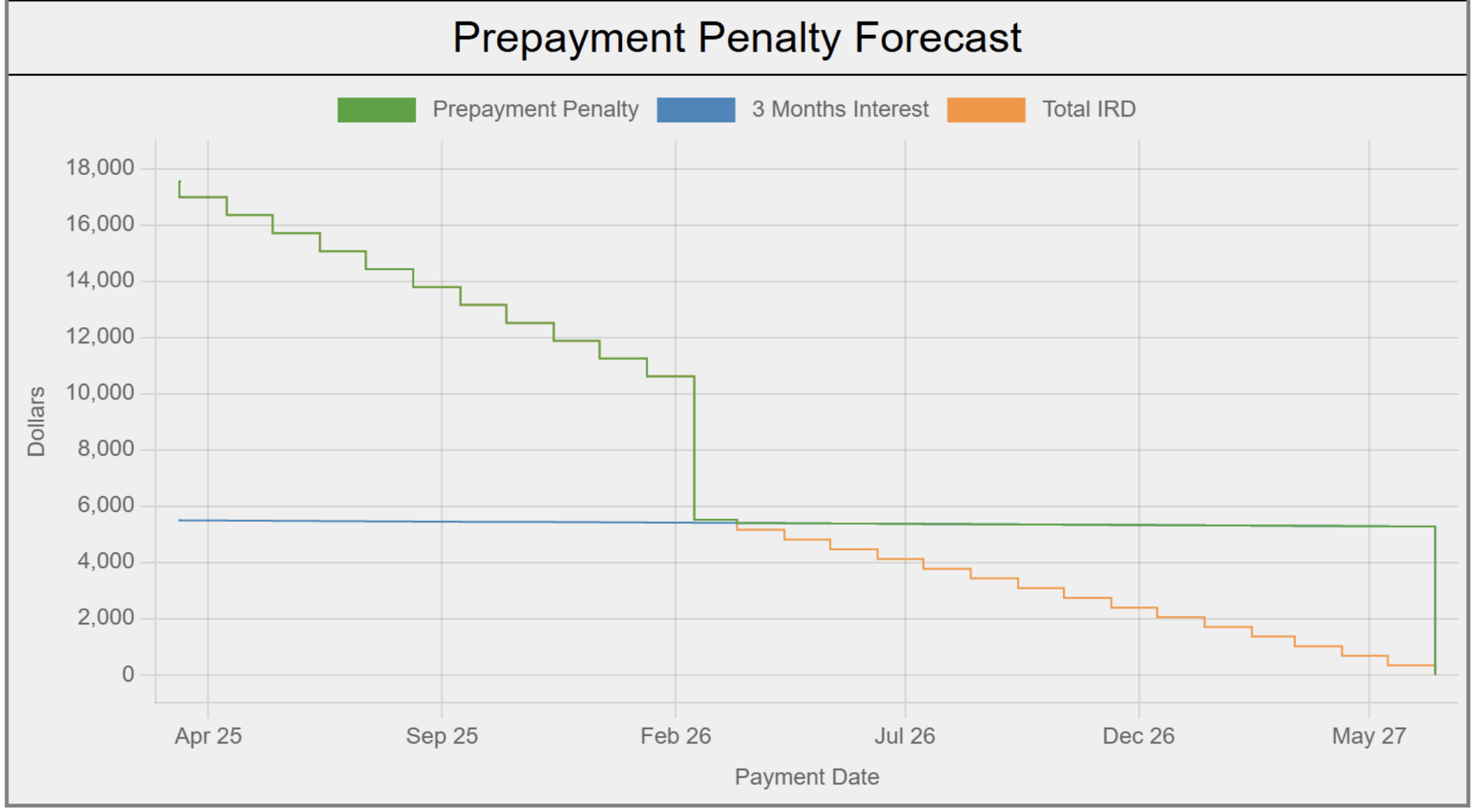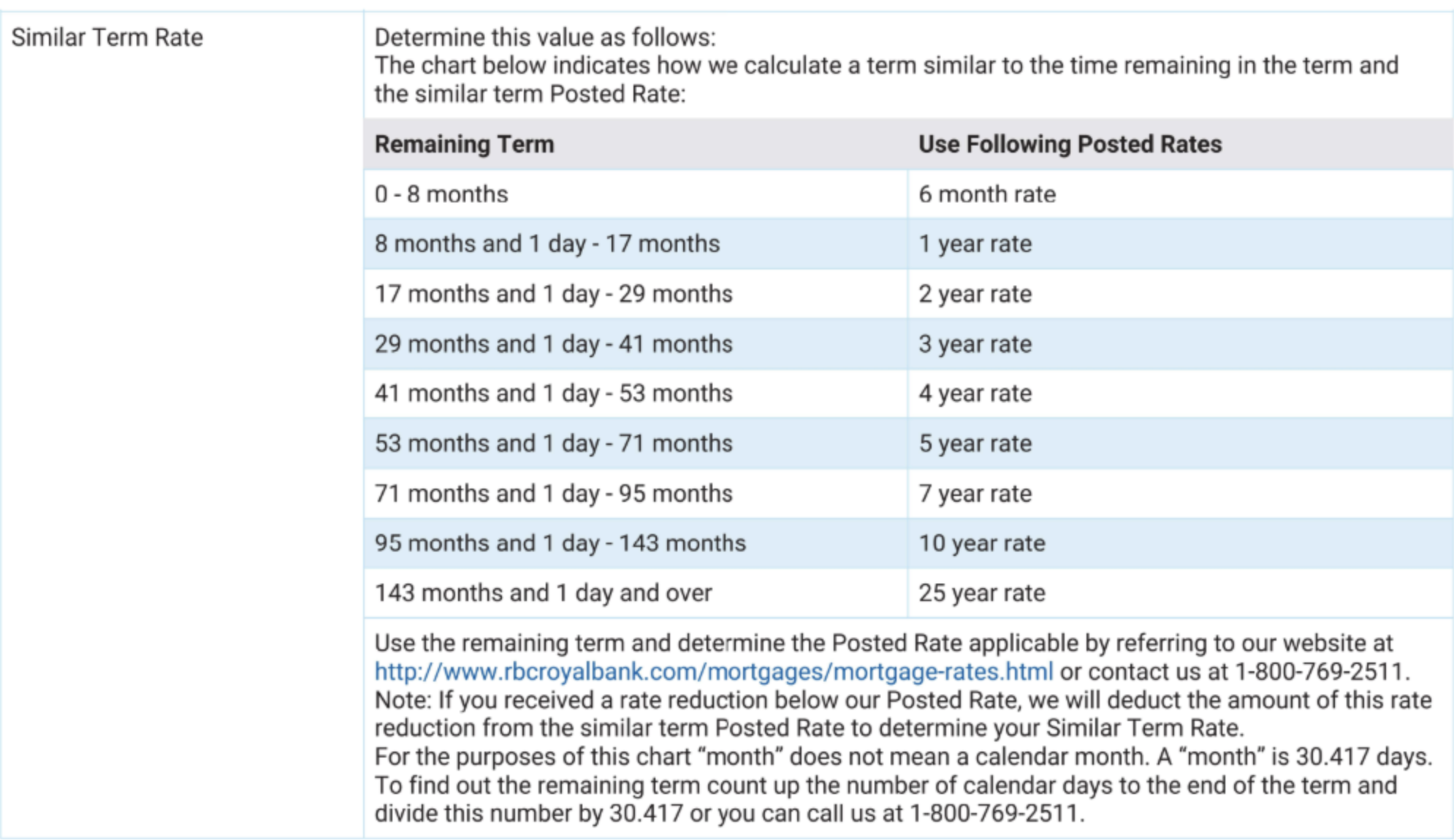RBC Mortgage Payout Penalties Skyrocket in 2025
Details of the recent actions RBC has taken to INCREASE THE PAYOUT PENALTY for their own customers.It shows that Big-6 Banks are not your best -mortgage- friend. Brokers Are!Mortgage Mark Herman, Top Calgary Alberta mortgage broker
If you’re seeking a textbook case of banks giving consumers the short end of the stick, look no further.
The nation’s biggest mortgage lender, RBC, just slashed its posted rates.
“RBC’s move is the biggest move to increase penalties (IRDs) since its posted rates peaked on September 20, 2023,” says Matt Imhoff, founder of Prepayment Penalty Mentor.
For those fluent in the dark arts of interest rate differential (IRD) charges, this spells disaster for anyone daring to escape their RBC mortgage shackles early. Here’s precisely how grim it gets…
This is what RBC did to its posted rates today (Friday):
- 5 Year: -30 bps
- 4 Year: -25 bps
- 3 Year: -35 bps
- 2 Year: -85 bps
- 1 Year: -55 bps
- 6 Month: -55 bps
Anyone attempting to break a 2, 5, 7, or 10-year RBC mortgage now is potentially in for a world of penalty hurt due to these changes.
By way of example, if you’re an originator poaching a $500,000 RBC 4.4% 3-year fixed originated in July 2024, that client would be staring down a penalty of approximately $17,500, Imhoff says.
That’s up almost $10,000 in one day—simply because RBC slashed the comparison rate (its 2-year posted rate in this case).
In other words, the 255 bps “discount” from posted that this customer got in 2024 is now like a financial boomerang, coming back to hit them hard Imhoff says.
“This IRD is significantly higher than it should be, and that’s the risk of going with a bank where posted rates are elevated.”
In the above example, the client’s only option to avoid more than a three-month interest penalty would be to ride out their RBC term until they have just 1.41 years remaining (per the chart below).

To virtually ensure a three-month interest penalty, a customer needs to be just eight months shy of their mortgage’s maturity, as illustrated in the RBC table below.

Watch out for TD customers
As Matt’s table below shows, TD’s posted rates are well above where they typically reside relative to bond yields. As a result, “I believe this sets the stage for what TD will inevitably do,” he says.

In cases where a client needs to refi, he adds that the risk of imminent posted rate changes at TD makes it too risky for brokers to get the deal approved elsewhere and then request discharge from TD. Time is money in this case.
“If a broker tries to get a payout order from TD today, TD can wait up to five business days,” Imhoff notes, adding that during that time, the penalty can go up.
In the event that early discharge makes clear sense, he says, “I am advising brokers to have their TD clients go to the branch, break the mortgage, pay the penalty while it is still on sale, and switch into an open.”
PPM has a great table (below) that also shows which terms at which banks are most prone to IRD penalties. Terms in red face IRD charges now, based on the assumptions the user enters. Terms in orange are at risk of being charged IRDs on the next posted rate drop.

It pays to know in advance when penalties make a refinance uneconomical. “There are brokers working on deals today that will never fund—all that wasted time, effort, money, just to get a payout that kills the deal.”
Bank of Canada Lowers Consumer Prime to 4.95%
The Bank of Canada lowers its benchmark interest rate to 2.75%
In the face of significant geopolitical tensions, the Bank of Canada announced today that it has lowered its policy interest rate by 25 basis points. This marks the seventh reduction since June of 2024.
Below, we summarize the Bank’s commentary.
Canadian Economic Performance and Housing
- Canada’s economy grew by 2.6% in the fourth quarter of 2024 following upwardly revised growth of 2.2% in the third quarter
- This “growth path” is stronger than was expected when the Bank last reported in January 2025
- Past cuts to interest rates have boosted economic activity, particularly consumption and housing
- However, economic growth in the first quarter of 2025 will likely slow as the intensifying trade conflict weighs on sentiment and activity
- Recent surveys suggest a sharp drop in consumer confidence and a slowdown in business spending as companies postpone or cancel investments
- The negative impact of slowing domestic demand has been partially offset by a surge in exports in advance of tariffs being imposed
- The Canadian dollar is broadly unchanged against the US dollar but weaker against other currencies
Canadian Inflation and Outlook
- Inflation remains close to the Bank’s 2% target
- The temporary suspension of the GST/HST lowered some consumer prices, but January’s Consumer Price Index was “slightly firmer” than expected at 1.9%
- Inflation is expected to increase to about 2.5% in March with the end of the tax break
- The Bank’s preferred measures of core inflation remain above 2%, mainly because of the persistence of shelter price inflation
- Short-term inflation expectations have risen in light of fears about the impact of tariffs on prices
Canadian Labour Market
- Employment growth strengthened in November through January and the unemployment rate declined to 6.6%
- In February, job growth stalled
- While past interest rate cuts have boosted demand for labour in recent months, there are warning signs that heightened trade tensions could disrupt the recovery in the jobs market
- Meanwhile, wage growth has shown signs of moderation
Global Economic Performance, Bond Yields and the Canadian Dollar
- After a period of solid growth, the US economy looks to have slowed in recent months, but US inflation remains slightly above target
- Economic growth in the euro zone was modest in late 2024
- China’s economy has posted strong gains, supported by government policies
- Equity prices have fallen and bond yields have eased on market expectations of weaker North American growth
- Oil prices have been volatile and are trading below the assumptions in the Bank’s January Monetary Policy Report
Rationale for a rate cut
While the Bank offered that economic growth came in stronger than it expected, the pervasive uncertainty created by continuously changing US tariff threats is restraining consumers’ spending intentions and businesses’ plans to hire and invest. Against this background, and with inflation close to the 2% target, the Bank decided to reduce its policy rate by 25 basis points.
Outlook
The Bank notes that the Canadian economy entered 2025 “in a solid position,” with inflation close to its 2% target and “robust” GDP growth. However, heightened trade tensions and tariffs imposed by the United States will likely slow the pace of economic activity and increase inflationary pressures in Canada. The economic outlook continues to be subject to more-than-usual uncertainty because of the rapidly evolving policy landscape.
Final comments
The Bank noted that monetary policy “cannot offset the impacts of a trade war.” What monetary policy “can and must do” is ensure that higher prices do not lead to ongoing inflation.
The Bank said it will carefully assess: i) the timing and strength of both the downward pressures on inflation from a weaker economy and ii) the upward pressures on inflation from higher costs. It will also closely monitor inflation expectations.
It ended its statement by saying it is committed to maintaining price stability for Canadians.
More scheduled BoC news
The Bank is scheduled to make its third policy interest rate decision of 2025 on April 16th.
